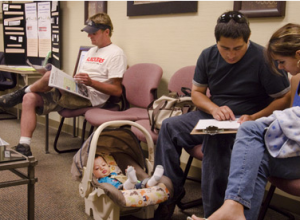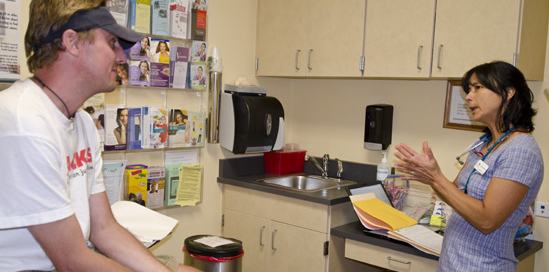by My Canadian Pharmacy
 Health insurance rates in mountain resort areas in Colorado proved to be so high that the USA representative Martin Polis tries to get waivers from the government – in this case, people who do not buy insurance in 2015 won’t have any financial fires.
Health insurance rates in mountain resort areas in Colorado proved to be so high that the USA representative Martin Polis tries to get waivers from the government – in this case, people who do not buy insurance in 2015 won’t have any financial fires.
“We will try to get a waiver. Summit County residents will find it difficult to become insured. The majority of people consider a price too high” said Polis.
This idea greatly disappointed health coverage guides who work to involve Summit County residents in new health plans using Colorado’s health exchange. They did not manage to enroll new clients since Colorado’s health exchange started on Oct. 1.
“As soon as people see health insurance rates, they turn back and go away,” said Sara Sallevan, a director of the Family Resource Center, that is trying to enroll people in new health plans that will be launched on Feb. 1 through Colorado’s health exchange.
“This is difficult. We hoped that the market would cut down health insurance rates. Regretfully, that’s not we see at the moment. They are extremely high and not acceptable for many people. Their incomes are already not very high,” said Sara Sallevan.
Three times higher health insurance rates
Health insurance rates on health exchange, Connect for Health Colorado, from Breckenridge to Vail are nearly three times higher than in all other parts of the state. For example, a 40-year-old could pay only $200 per month for a mid-level silver plan in Greeley, while a 40-year-old in the mentioned resort communities could pay $600 per month and even more.
 Colorado’s ski resort communities have the highest rates of uninsured in the state. Summit Counts is considered 17th worst. (The shot was provided by Summit Community Care Clinic.)
Colorado’s ski resort communities have the highest rates of uninsured in the state. Summit Counts is considered 17th worst. (The shot was provided by Summit Community Care Clinic.)
President Barack Obama is trying to change the rates of health insurance and make it as high as paying for cell phone service or TV service. Still, the rates are much higher than $50 per month. Often, resort residents have to work so many jobs in order to afford housing that their incomes seem artificially high – as a result, they are disqualified from tax subsidies.
Sara Sallevan said that usually the residents in Summit County give about 40% of their income for housing. Some jobs have health insurance and overall expenses such as food. Gas also costs more in Colorado’s resort areas, persuading people with little extra money to pay for health insurance.
Health coverage guides sometimes worked with clients for an hour, explaining them the entire process only to see them shocked when it came to prices.
“They are walking out the door,” Sara Sallevan said.
My Canadian Pharmacy asked how many of them have purchased plans: “Nobody”, she said.
She added that they needed much time to work out glitches with the online system of Connect for Health Colorado, but it turned out that computer problems weren’t the main problem in this mountain county.
“It took much time to make the system function. But the real problem was is that the prices are sky-high!,” she said.
17th worst county
Summit County comprises some of Colorado’s popular ski areas: Copper Mountain, Arapahoe Basin, Breckenridge and Keystone. The county has the highest amount of people without insurance in the state – from 30 to 35%. The indicators are even lower among Latinos. A recent study showed that Summit County was rated 17th worst county in the state for the highest amount of uninsured Hispanics. My Canadian Pharmacy found out that only 40% of Latinos in Summit County were insured.
Summit County’s three commissioners have been fielding complaints about health costs as well.
Commissioner Steve Meier said the problems of getting health coverage does not attract young families.
“We suggest that everything is too expensive here, like gas,” Steve Meier said.
The Summit Community Care Clinic can help people get primary care but patients can’t get care for their complex medical problems. (Shop provided by Summit Community Care Clinic.)
 “But we’re doing our best to make child care and housing affordable. All people living here want to have families, not only people with high salaries or retired people who have good savings. We strive to build up a real community with a good health care. It’s one of our main needs,” Steve Meier said.
“But we’re doing our best to make child care and housing affordable. All people living here want to have families, not only people with high salaries or retired people who have good savings. We strive to build up a real community with a good health care. It’s one of our main needs,” Steve Meier said.
As soon as they started discussing high insurance rates, Martin Polis posted a letter trying to get help from Colorado Insurance Commissioner Maria Solomon. They met last week.
Moving to another region
Neither Polis nor Solomon see any way to cut insurance rates down in 2015. But Polis wants Summit County to move to another region from Jefferson or Clear Creek Counties the next year.
“That could reduce prices by 50%,” Polis said.
“I’m very anxious. The high rates will not allow many people to afford insurance. But I hope Summit County will move a region with a different rating,” Polis said.
Polis said that Summit County relates more to Front Range communities in terms of health care needs. There is no immediate solution for Vail and Aspen, which do not belong to his Congressional district.
“Some counties need to find out how they can cut down health care rates,” Polis said. “Health care is very expensive in those counties and needs a complex approach.
My Canadian Pharmacy thinks it has nothing to do with Affordable Care Act. Affordable Care Act doesn’t fix that.
New cost transparency under Obama’s care give hope to Polis that the regional price would change soon.
Solomon did not comment on these rates, but she wrote in a statement that geographic rate variations are necessary as health insurance rates differ so much in the states of Colorado.
“The legal requirements do not allow to review the geographic areas in 2015,” Solomon said.
But she added that the public will be able to express their points of view in 2016.
It could take over a year to reduce prices – and these are sad news for health providers of Summit County.
Freeman, an executive director of the company trying to insure people, worries that people will find a better option, tired of waiting.
 Medical providers worry that people in these resort areas will not sign up for health insurance, as other places in the state offer much more better prices. (Photo provided by Summit Community Care Clinic.)
Medical providers worry that people in these resort areas will not sign up for health insurance, as other places in the state offer much more better prices. (Photo provided by Summit Community Care Clinic.)
“What is they do not come back? We should find a solution quickly. I do not want to see thousands of people not signing up,” she said.
90% of patients had no insurance
Catherine Durst is an executive director of the Summit Community Care Clinic, a safety-net clinic in Summit County. Last year, the clinic was visited by about 6000 patients during more than 17000 visits. 90% of patients had no insurance and paid only what they could afford. Safety-net clinics in Clear Creek and Park counties have been closed not so long ago. Some people have to travel to Summit Community Care Clinic from Leadville and Eagle County.
Catherine Durst sees many patients who do not have health insurance. For example, a young man who has always been healthy and never needed health insurance had a stroke at age of 35 and now has big problems with hypertension. He gets health care in the Summit Community Care Clinic but has no access to specialists that he should be seeing.
“People without health insurance have no options here,” she said.
When a patient has a low income, he may qualify for Medicaid that allows adults who earn up to 139% of the poverty level to join the public insurance program.
But even patients with insurance have to pay high costs. For example, Miller have what they consider a good health plan. However, when he needed an MRI, he decided to drive to another county where it would cost $400 instead of $2,000 that it would have cost in his county.
What to expext?
Durst suggests that many people continue refusing health insurance, and Summit County will go on leading its residents in the dubious distinction.
“In our community, rates are vastly different from those on the Front Range,” she said.
She also expects healthy young people in other states of Colorado to decide it’s not worth paying for health insurance.
Residents of resort communities won’t even bother buying insurance, she expects.
“It’s not a good choice to pay two to three times more for health insurance. They will never do this. It’s not affordable,” the woman said.
“I hope is that the rates will become fair, and second, that more people will buy health insurance through the marketplace and we will see costs reduced,” Durst said. “I’m an optimist. I still recommend people doing some research and maybe they will see some options.”
My Canadian Pharmacy also hopes for a quick rate adjustment in Colorado.
